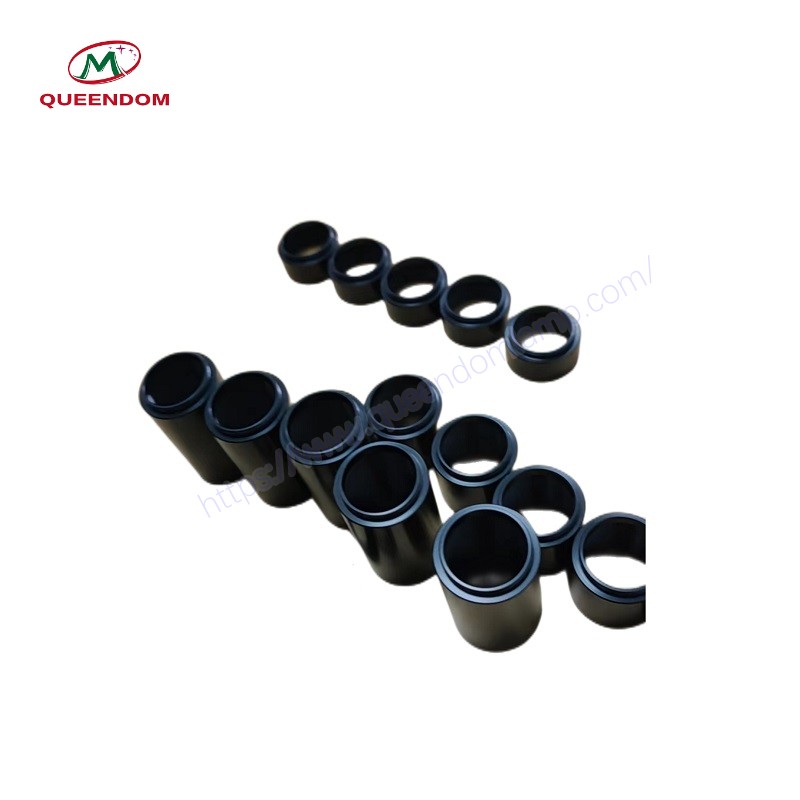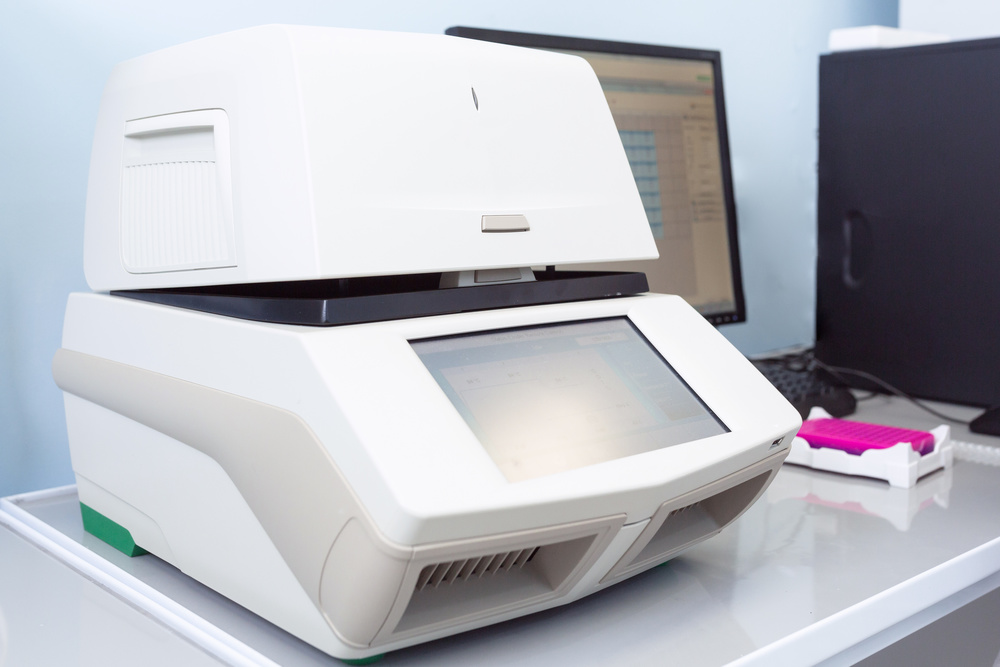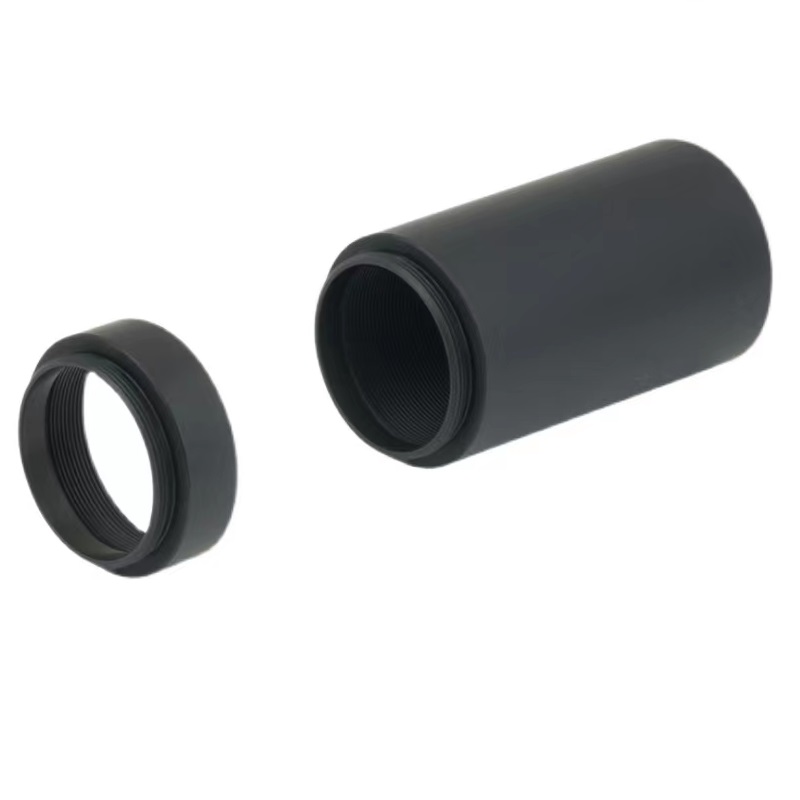PCR optics LED lens tube is a high-performance optical component, which can be widely used in PCR fluorescence analyzer, medical application optical lens tube system and other industries. Queendom technology optical components adopt advanced optical technology, can guide light precisely, have high light transmission rate and low light loss, and can meet various high-precision optical applications.
This PCR Optics LED Lens Tube is a high-quality optical element that uses high-quality materials to make it more durable and have a longer service life. At the same time, it also has a high degree of compatibility and flexibility, and can adapt to many different application scenarios.

As an optical component specially designed for PCR fluorescence analyzer, the main application field of PCR optical LED lens sleeve is in the optical system of PCR fluorescence analyzer. This means it can help the analyzer to better capture the signal and improve the accuracy and stability of the analyzer.
The product is also equipped with a variety of intelligent systems, such as LED light source, optical fiber interface and adjustment system. These systems can make optical components more accurate, stable and practical, thus providing users with a higher quality optical experience and better service.
Due to its wide range of applications, PCR Optics LED Lens Tubes can also be used in medical application optical lens tube systems. These systems include a variety of medical optical devices such as endoscopes, surgical lights, laser therapy devices, and more. In these applications, PCR optics LED lens tube can help doctors to observe and diagnose more clearly, improve treatment effect and patients’ quality of life.
PCR Optics LED Lens Tubes can be mounted and operated in a variety of ways. It can be used with a variety of optical devices or connected by optical fiber, allowing more flexible optical guidance and processing.
In conclusion, PCR Optics LED Lens Tube is a high-quality, high-performance optical component that is compatible with many different scenarios and applications. Improve the quality and accuracy of the optical experience, whether in PCR fluorescence analyzers or optical lens tube systems for medical applications.
Standard Ø1″ Lens Tubes with SM1 threads can hold one or more Ø25.4 mm optics, or can be used to shield the light path, and are compatible with 30mm cage systems. The optical components are separated and fixed with Queendom technology snap rings, and the position of the snap rings can be adjusted along the entire length of the lens tube with a compatible Guangdong Zhengfa technology snap ring wrench. The lens tube combination can be connected to extend the length, which is conducive to quickly building a compact optical system. Queendom also offers Ø1/2″ and Ø2″ lens tubes.
Material: 6061-T6 aluminum alloy
Installation diameter: φ25.4mm optical element
Various lens tubes: F1SMxxA series of internal and external threads at both ends, F1SMxxB series of internal threads, F1SMxxC series of external threads
Standard Ø2″ lens tubes are SM2 threaded to hold one or more Ø50.8 mm optics, or to shield the light path, and are compatible with 60mm cage systems. The optical components are separated and fixed by Guangdong Zhengfa Technology retaining rings, and the position of the retaining rings can be adjusted along the entire length of the lens tube with a compatible Queendom retaining ring wrench. The lens tube combination can be connected to extend the length, which is conducive to quickly building a compact optical system. Queendom Technologies also offers Ø1/2″ and Ø1″ lens tubes.
Lens tube: Ø1 inch, Ø2 inch lens tube; used for optical path light shielding, compatible with snap ring wrench lens tube combination can be connected to extend the length, which is conducive to quickly build a compact optical system.
Material: 6061-T6 aluminum alloy
Installation diameter: φ50.8mm optical element
A variety of lens tubes: internal and external threads at both ends, internal threads, and external threads
Electrical product attributes:
Power: 0.2W/3W
Wavelength: 365-800mm
Current: 20-60MA/300-700MA
Voltage: 1.5-4V
Lens Tubes: Ø1″, Ø2″ Lens Tubes
Material: 6061-T6 aluminum alloy
Installation diameter: φ25.4mm optical element/φ50.8mm optical element
A variety of lens tubes: internal and external threads at both ends, internal threads, and external threads

Medical bio-optics is an interdisciplinary subject that applies optical technology to the fields of medicine and biology. It involves the use of optical instruments and techniques to diagnose and treat disease, and to study the structure and function of living organisms.
Applications in medical bio-optics include:
- Optical imaging: use optical imaging techniques to observe the structure and function of biological tissues and organs, such as fluorescence microscopy, optical coherence tomography (OCT), etc.
- Optical diagnosis: The use of optical techniques to diagnose diseases, such as fundus photography, corneal topography, dermoscopy, etc.
- Optical therapy: The use of optical technology to treat diseases, such as laser surgery, photodynamic therapy, etc.
- Biophotonics: Study the interaction between light and living organisms, such as photosynthesis, photosensitization reactions, etc.
The development of medical bio-optics has brought new opportunities and challenges to the fields of medicine and biology, and has also made important contributions to the protection of human health and life.
Medical optical components are an important part of modern medical technology. It includes various types of optical devices used in the diagnosis, treatment and management of different medical conditions. Optical technology enables physicians to perform detailed examinations and treat patients with greater accuracy and precision.
Medical optical components include a range of equipment including microscopes, endoscopes, surgical lasers, CT scans, MRI and X-ray machines. These devices vary in size, functionality, and complexity, but they all have one thing in common—they rely on advanced optics to visualize and diagnose medical conditions.
One of the most important applications of medical optical components is diagnostics. Microscopes are perfect examples of essential diagnostic tools in pathology, hematology, and microbiology. Doctors often use light microscopes to diagnose blood disorders, cancer and infectious diseases.
Endoscopic equipment is also crucial for diagnosing medical conditions. This is where optical components are used to visualize internal organs such as the bladder, stomach and colon. Endoscopy has improved the diagnosis of recurrent and intestinal bleeding.
In addition to diagnosis, medical optical components also play a vital role in therapy. An example is surgical lasers. Lasers have revolutionized the way surgery is performed. Thanks to this technology, operations that used to require large incisions can now be performed using minimally invasive techniques.
CT scans, MRI scans and X-rays are also part of the medical optics package. These scans use X-rays, radio waves, or magnetic fields to create detailed images of the body. Doctors use these scans to diagnose and monitor different medical conditions, including bone fractures, infections and tumors.

The use of medical optical assembly equipment continues to evolve rapidly, new uses for existing equipment are found, and technological advancements lead to the continuous development of new equipment. The introduction of artificial intelligence to assist in the analysis of medical images is a recent innovation that has helped improve diagnostic accuracy.
In summary, medical optical components are an essential part of modern medical technology, revolutionizing the way medical conditions are diagnosed and treated. With continued research and innovation in this field, the level of accuracy and precision in medical diagnosis and treatment is bound to increase dramatically.














Explore More from Queendom Lamp
Stay updated with the latest LED technology, lighting solutions, and industry insights.
Request a Quote About Queendom